Mediterranean Science Commission
The Mediterranean Science Commission, or Commission Internationale pour l'Exploration Scientifique de la Méditerranée (CIESM)[lower-alpha 1], is a commission created in Madrid, Spain, in 1919 to undertake multilateral international research on marine science in the Mediterranean Sea. The organization was founded by countries that border the sea and is now open to all countries engaged in scientific research in the sea. The CIESM aims to develop scientific cooperation through promoting international use of national research stations. The CIESM is an intergovernmental body with 23 member states that mostly border the Mediterranean coast.[1]
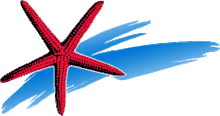 | |
| Abbreviation | CIESM |
|---|---|
| Formation | November 1919 |
| Type | IGO |
| Purpose | Scientific research |
| Headquarters | Monaco |
President | Prince Albert II of Monaco |
Director General | Professor Frederic Briand |
| Website | www |
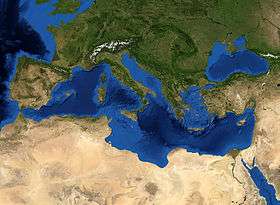
Early years
Two professors, the Italian Decio Vinciguerra and the German Otto Krümmel,[2] thought it would be useful for the fishing industry to promote oceanographic exploration of the Mediterranean Sea. Based on Vinciguerra's proposal, the 9th International Geographical Union in Geneva endorsed the principle of a commission in July 1908 and decided a committee should define the organization.[3] The committee was formed and first met in Monaco on 30 March 1910 under the chairmanship of Albert I, Prince of Monaco, in the premises of the recently created Oceanographic Museum. Two apparently contradictory principles emerged. The Commission had to be free from political interference, and the countries had to be represented at the government level so the scientific opinions of the commission would carry weight.[3]
The next meeting, in February 1914, endorsed the principle that all the countries bordering the Mediterranean and the Black Sea should be eligible for membership. The planned third meeting, in Spain, was cancelled as a result of the start of World War I. The Constituent Assembly of the CIESM was therefore delayed until November 1919, when it was held in Madrid after a preparatory meeting in Paris in June 1919.[3] King Alfonso XIII of Spain was the first president.[4] The founding meeting had representatives from Egypt, France, Greece, Italy, Monaco, Spain, Tunisia and Turkey.[3]
From 1919 until 1939 several marine observatories were founded around the Mediterranean in countries such as Algeria, Tunisia, and Italy. Specialized French, Italian, and Spanish vessels undertook mapping and research in the Strait of Gibraltar, the Bosphorus, the Strait of Messina, and the Gulf of Gabès. The membership expanded to include Romania (1925), Serbia (1927), Cyprus (1919), Palestine (1929), Syria (1930), Lebanon (1930) and Morocco (1933). The commission published a journal and annual reports.[3]
Post World War II
The work of the commission was suspended during World War II, but despite some pressure to transfer responsibility to the United Nations, meetings resumed in 1951 in Paris. In 1954 a new emphasis on marine protection was formulated.[3] In 1966 the 20th CIESM Congress was organized in Bucharest and Constanţa, Romania, by the marine biologist Mihai Băcescu. At that meeting Rainier III, Prince of Monaco, was elected President and Jacques Cousteau general secretary.[5][6] Cousteau held this position until 1988, when he was succeeded by François Doumenge, who was general secretary until 2007.[3]
With a change in statutes to allow members of non-coastal countries that engaged in research, Germany became a member in 1969 followed by Switzerland in 1970. In 1992 Croatia, Slovenia, and Ukraine became members. In 1996 CIESM restructured itself into six commissions. In 2004 Portugal joined.[3]
Examples of work
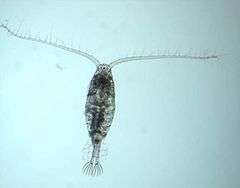
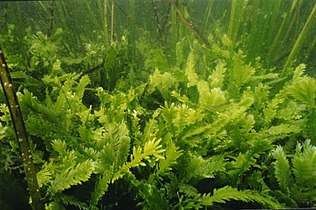
The CIESM runs workshops and collaborative programs, helps several thousand marine researchers exchange information and publishes studies.[7] It is the only organization that specializes in scientific research in the Mediterranean Sea.[8] The CIESM provides advice on issues related to the Mediterranean sea ecosystems that is both neutral and authoritative. Through its network of scientists and organizations involved in marine science it can quickly detect changes and alert governments and others who must take action.[9]
In 1993 CIESM responded to a request from the European Parliament and issued a detailed assessment of Marine Pollution in the Mediterranean.[3] Several CEISM reports have given the results of studies of trace metals in the Mediterranean, which could lead to human health issues from eating fish with unacceptable levels of mercury.[10][11] In 1998 the CIESM began running research workshops which produced widely read monographs on emerging issues.[3] Studies have covered subjects such as phytoplankton blooms in the central Adriatic,[12] distribution of copepods and other zooplankton species,[13] fluctuations in sardine population,[14] causes of changes in salinity,[15] feeding of juvenile seabream and many other subjects.[16]
Also in 1998 the CIESM created a task force that began to monitor exotic species that had recently been introduced to the Mediterranean sea, leading to publication of the CIESM Atlases on Exotic Fishes, Crustaceans and Mollusks.[3] The CIESM has gathered data on invasions by exotic species, often carried in ships' ballast water. The emphasis of this research has been on economically important species. Due to the nature of the research activity and the wide variations in study intensity in different parts of the sea the data are illustrative rather than the systematic.[17] Some species are unwanted while others are valuable. Fish and prawns that have migrated to the Mediterranean from the Red Sea, account for almost half the food caught by trawlers along the east coast of the sea.[18]
In July 2000 thirty one scientists from twelve countries attended a CIESM workshop on "Fishing down Mediterranean food webs". They discussed the concept of fishing down the food web as it applied in the Mediterranean.[19] In June 2004 the CIESM held a round table discussion on protection of the Mediterranean deep sea including cold seeps, cold water coral "reefs", seamounts and brine pools. All of these are potentially threatened by human activities such as bottom trawling, waste disposal and seafloor drilling.[20]
The 36th CIESM Congress was held in Monaco in September 2001. During a round-table discussion on "Effective Monitoring of Marine Climate Changes" it became clear that long term and cyclical changes were occurring but there was not enough data to properly understand their nature and cause. A three-day workshop was arranged for April 2002 to look into question, where the scientists agreed on the need for a long term monitoring system that would include measurement and modelling of oceanographic and atmospheric changes.[21]
Current organization
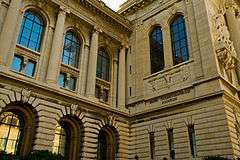
Under the statutes of the commission as of 30 November 1970, the headquarters is at the Oceanographic Museum in Monaco and the official language is French. A President and a Secretary General are elected every four-year at the plenary Congress and Assembly, and may be reelected. A plenary Congress and Assembly were to be held every two years, and to decide on subjects to be studied.[22] Since 1992 CIESM Congresses have been held every three years.[23] The current Chair of the Commission is Albert II, Prince of Monaco.[24]
The 23 member countries are: Algeria, Croatia, Cyprus, Egypt, France, Germany, Greece, Israel, Italy, Lebanon, Malta, Monaco, Morocco, Portugal, Romania, Russian Federation, Slovenia, Spain, Switzerland, Syria, Tunisia, Turkey and Ukraine. The 2008 budget was €910,000.[1] The CIESM is part of the European Union's MARCOM programme.[25] The CIESM works with other international agencies such as the General Fisheries Commission for the Mediterranean and with national projects, some funded by the Mediterranean Environmental Technical Assistance Program (METAP) organized by the World Bank in cooperation with the United Nations Development Programme, European Investment Bank and the European Commission.[26]
The Commission draws on the work of researchers in over 30 countries. It has six Committees:[23]
- Marine Geosciences,
- Physics and Climate of the Ocean,
- Marine Biogeochemistry,
- Marine Microbiology and Biotechnology,
- Marine Ecosystems and Living Resources,
- Coastal Systems.
Notes and references
Notes
- In Spanish: Comisión Internacional para la Exploración Científica del Mar Mediterráneo
Citations
- Coopération internationale de la Suisse...
- Berget 1910, p. 645.
- History.
- Albert Ier – le scientifique.
- Murariu 2009.
- Pickering 2012.
- Rades & Tilesman 2008, p. 20.
- DiMento & Hickman 2012, p. 96.
- DiMento & Hickman 2012, p. 57.
- Fabbri & Fierro 1992, p. 49.
- Meeting on the Biogeochemical Cycle of Mercury... 1984, p. 7ff.
- Caddy & Savini 1988, p. 49.
- Caddy & Savini 1988, p. 56.
- Caddy & Savini 1988, p. 57.
- Caddy & Savini 1988, p. 62.
- Caddy & Savini 1988, p. 299.
- Davenport & Davenport 2006, p. 53.
- Davenport & Davenport 2006, p. 74.
- Christensen & Maclean 2011, p. 84.
- WWF Mediterranean Programme 2004, p. 45-46.
- Theocharis 2003, p. 78.
- Peaslee 1979, p. 271-273.
- Marine Research.
- Biography – H.S.H. Prince Albert.
- The MARCOM+ Consortium.
- Benoit & Comeau 2005, p. 49.
Sources
- "Albert Ier – le scientifique". Lycée Albert 1er de Monaco. Retrieved 5 December 2012.
- Benoit, Guillaume; Comeau, Aline (2005). A Sustainable Future for the Mediterranean: The Blue Plan's Environment And Development Outlook. Earthscan. p. 49. ISBN 978-1-84407-259-0. Retrieved 5 December 2012.CS1 maint: ref=harv (link)
- Beolens, Bo; Watkins, Michael; Grayson, Michael (26 July 2011). The Eponym Dictionary of Reptiles. JHU Press. ISBN 978-1-4214-0135-5. Retrieved 5 December 2012.CS1 maint: ref=harv (link)
- Berget, Alphonse (1910). "L'Institut Océanographique et le Musée de Monaco". La Revue scientifique. 48: 641–46.CS1 maint: ref=harv (link)
- "Biography – H.S.H. Prince Albert". Prince's Palace of Monaco. Archived from the original on 15 November 2013. Retrieved 5 December 2012.
- Caddy, John F.; Savini, M. (1 October 1988). Rapport de la cinquième Consultation technique du Conseil général des pêches pour la Méditerranée sur l'évaluation des stocks dans l'Adriatique et la mer Ionienne: Bari, Italie, 1–5 juin 1987. Food & Agriculture Org. p. 60. ISBN 978-92-5-002677-0. Retrieved 5 December 2012.CS1 maint: ref=harv (link)
- Christensen, Villy; Maclean, Jay (3 March 2011). Ecosystem Approaches to Fisheries: A Global Perspective. Cambridge University Press. ISBN 978-0-521-11305-2. Retrieved 5 December 2012.CS1 maint: ref=harv (link)
- "Coopération internationale de la Suisse dans le domaine de la recherche marine en Méditerranée, dans le cadre de la Commission internationale pour l'exploration scientifique de la mer Méditerranée". Secrétariat d'Etat à l'éducation et à la recherche SER. Retrieved 5 December 2012.
- Davenport, John; Davenport, Julia L. (2006). The Ecology of Transportation: Managing Mobility for the Environment. Springer. ISBN 978-1-4020-4504-2. Retrieved 5 December 2012.CS1 maint: ref=harv (link)
- DiMento, J. F. C.; Hickman, Alexis Jaclyn (12 October 2012). Environmental Governance of the Great Seas: Law and Effect. Joseph F.C. Dimento and Alexis Jaclyn Hickman. Edward Elgar Publishing. ISBN 978-1-84844-375-4. Retrieved 5 December 2012.CS1 maint: ref=harv (link)
- Fabbri, Paolo; Fierro, Giuliano (1992). Semi-Enclosed Seas: Exchange of Environmental Experiences Between Mediterranean and Caribbean Countries. Taylor & Francis. ISBN 978-1-85166-849-6. Retrieved 5 December 2012.CS1 maint: ref=harv (link)
- "History". CIESM. Retrieved 5 December 2012.
- "Marine Research". CIESM. Retrieved 5 December 2012.
- Meeting on the Biogeochemical Cycle of Mercury in the Mediterranean: Supplement, FAO Fisheries Report No. 325, Sienna, Italy 27–31 Aug. 1984. Food & Agriculture Org. 1986. ISBN 978-92-5-102386-0. Retrieved 5 December 2012.
- Murariu, Dumitru (26 October 2009). Monica Manolachi (trans.). "Mihai Băcescu And Jacques Yves Cousteau". Animalia.ro (33). Retrieved 5 December 2012.CS1 maint: ref=harv (link)
- "Organization and Sessional Business of the Fourth International Fishery Congress" (PDF). Washington, U.S. A.: FOURTH INTERNATIONAL FISHERY CONGRESS. 22–26 September 1908. Retrieved 5 December 2012.
- Peaslee, Amos Jenkins (1979). International Governmental Organizations: Constitutional Documents. BRILL. p. 272. ISBN 978-90-247-2087-3. Retrieved 5 December 2012.CS1 maint: ref=harv (link)
- Pickering, David (2012). "COUSTEAU, JACQUES". The Museum of Broadcast Communications. Retrieved 5 December 2012.CS1 maint: ref=harv (link)
- Rades, Charles V.; Tilesman, Evan B. (2008). Advances in Environmental Research. Nova Publishers. ISBN 978-1-60456-413-6. Retrieved 5 December 2012.CS1 maint: ref=harv (link)
- "The MARCOM+ Consortium". MARCOM. Retrieved 5 December 2012.
- Theocharis, Alexander; et al. (CIESM Initiative Group) (4 December 2003). "Long-term sustained observing system for climatic variability studies in the Mediterranean". Building the European Capacity in Operational Oceanography: Proceedings 3rd EuroGOOS Conference. Gulf Professional Publishing. ISBN 978-0-444-51550-6. Retrieved 5 December 2012.CS1 maint: ref=harv (link)
- WWF Mediterranean Programme (2004). The Mediterranean Deep-sea Ecosystems: An Overview of Their Diversity, Structure, Functioning and Anthropogenic Impacts, with a Proposal for Their Conservation. IUCN. ISBN 978-2-8317-0846-1. Retrieved 5 December 2012.CS1 maint: ref=harv (link)